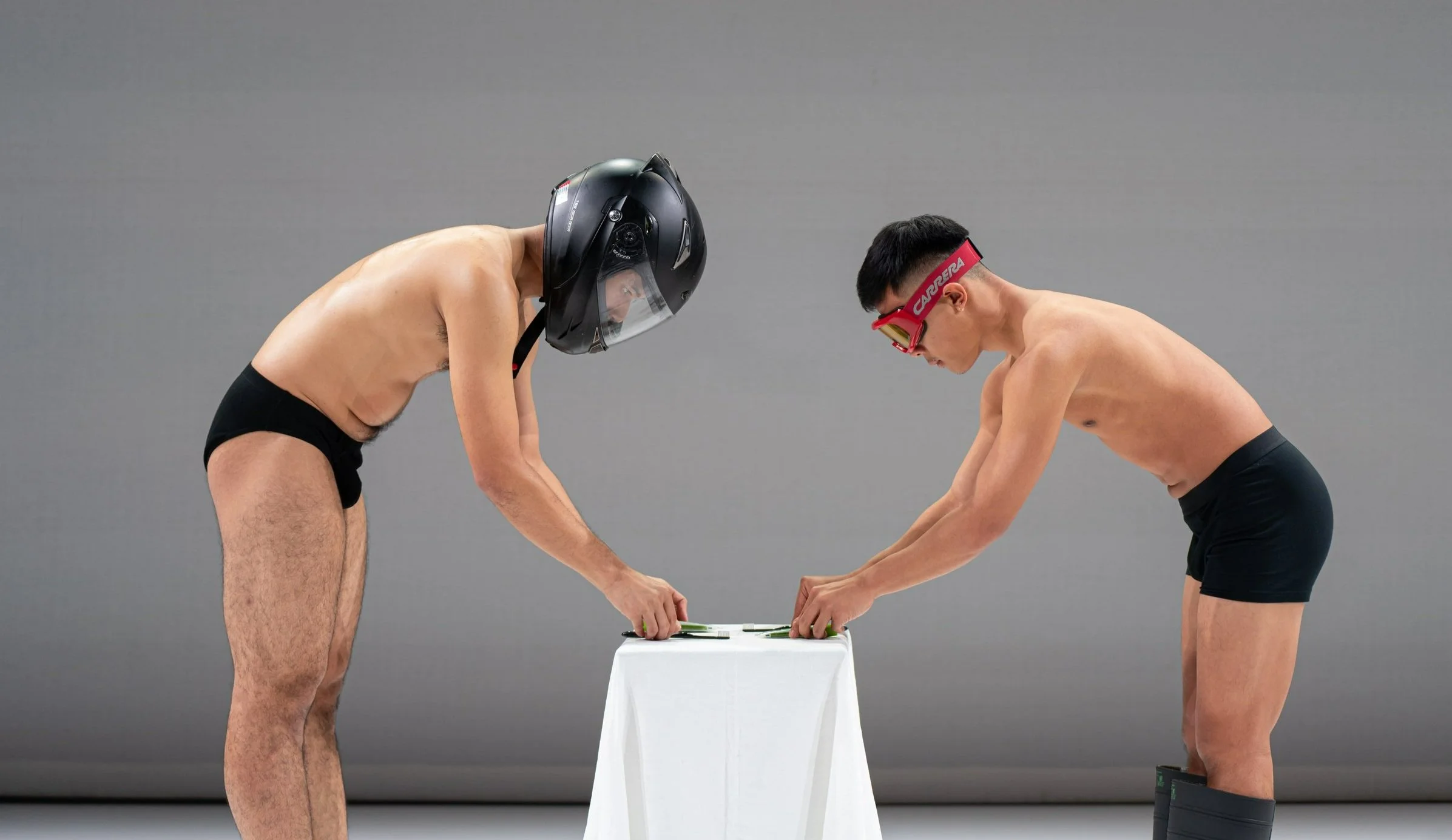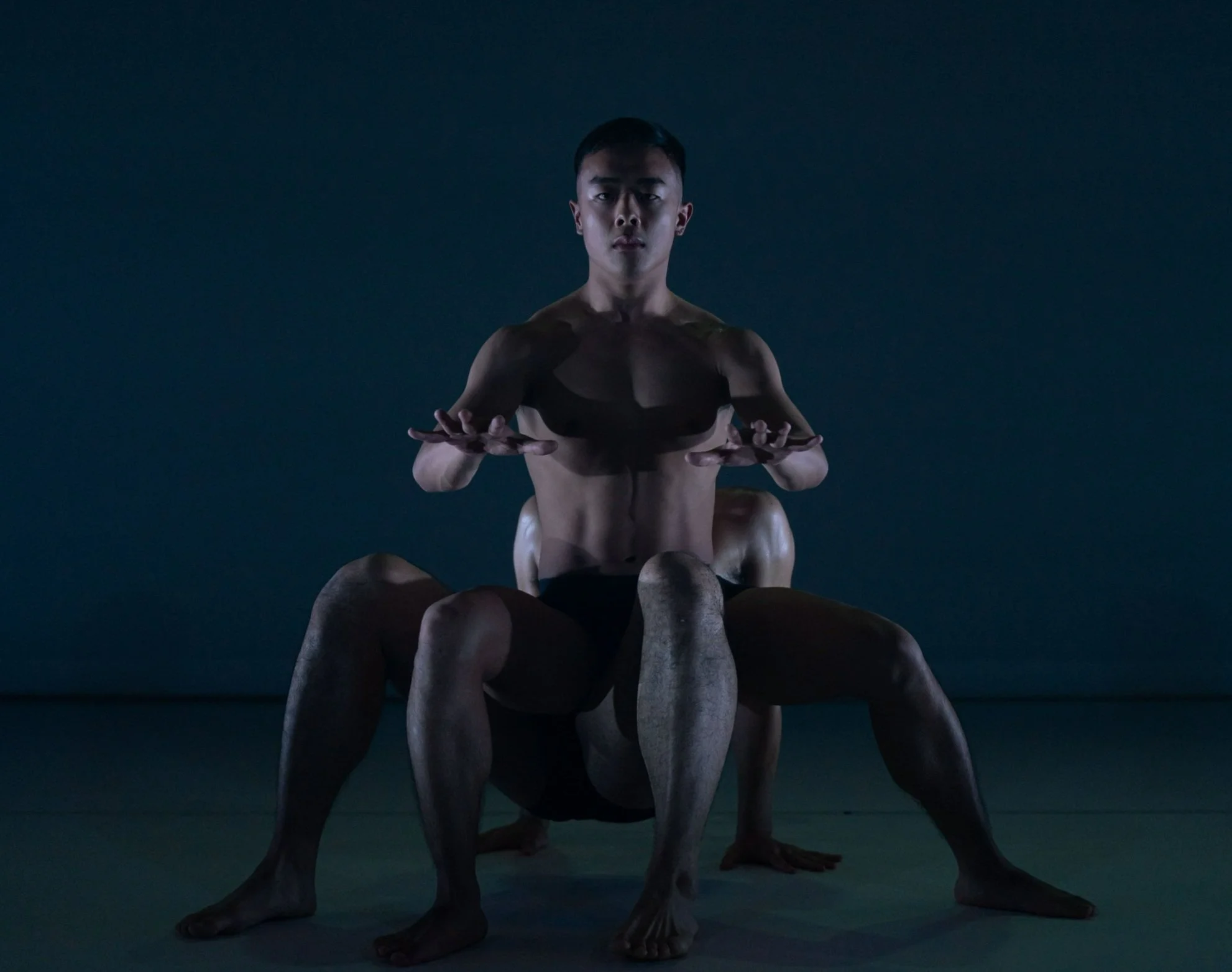[gameboy] | Amy Zhang
All images: Jade Ellis
I am not much of a gamer. I had a DS a child, I was on Club Penguin, I was even really into Wizard 101 for a while there, but online gaming culture is largely lost on me. I do know that it can bring people together who wouldn’t otherwise connect; I also know that it can bring out the very worst in people – the anonymity, the competition, the isolation from reality. Amy Zhang’s [gameboy] utilises these principles through movement and dance to make comment not just on internet gaming but the games we play and are played with us in our real lives.
This work is delivered to us in five distinct movements and so each paragraph of this review will treat each one as its own entity.
William ‘Billy’ Keohavong and Ko Yamada are positioned on opposite sides of the stage; they engage in a series of movements that becomes longer and more complex as new sections buffer. They move in complete isolation. The only parts of the dancer that interact with each other are their shadows on the scrim behind them. Dark, intense lighting. Harsh, flailing music. The game is loading. The player characters are being torn from their homes deep in the software.
The game has loaded, and the contest begins. This is section of the work that boarders more on physical or dance theatre than capital-d Dance. The players [performers] compete in three mini games, each more difficult than the last. The loser is punished by having to brush their teeth with wasabi. They connect only in that they are competing. One wears gumboots and a ski mask, the other a motorcycle helmet and sneakers. These items of costume provide each player with their own advantages and disadvantages in each mini game. A potential commentary on the advantages and disadvantages folks must mitigate as they navigate online spaces and try to compete or acquire followings as well as while they navigate life at large. This portion of the work sets the viewer up in a way where they are looking to see who is winning – establishing not only a sense of competition between the dancers but positions the viewer as referee/judge/instant replay/decider/photo finish and this sense permeates throughout the rest of [gameboy].
All images: Jade Ellis
We exit the world of the game and observe the players as the real world might. They are slumped over in chairs, still, silent, and somewhat absent. This stillness means every microscopic movement, each twitch of finger on controller or each stage of their slow descent into more contorted slumping/slouching/sprawling positions is noticed. Choreographer Amy Zhang emerges to clean up the boys’ mess from the previous movement of the work; they don’t notice her at all. This serves a practical as well as a dramaturgical purpose. Zhang moves at a natural, real-time pace while the players continuing moving in slow motion. Their experience of time slows, isolating the players from the real people around them all while distance continues to isolate them from each other. A comment is made here about the intangible nature of online connection and the real-world isolation that is often the price paid.
The players finally make physical contact, dancing a true duet for the first time since the work’s offset. However, in what should be a moment of closeness, intimacy, connection the players find their faces, their movements, their bodies morphed and melded into a singular writhing beast that lives somewhere between man and machine. Even when we make in-person connections as result of online platforms they are twisted, grotesque, perverted, corrupted in some way. They lack some core organic quality. This is the most intimate sequence; the players remain physically connected for its entirety. However, the language of the movement remains concerned with competition. Each player vies for dominance over the other; they concern themselves with who is on top of who, who is moving who, who leads and who follows.
All images: Jade Ellis
The players emerge from darkness and perform a peppy, perky sequence to a song by the K-Pop group Girls Generation. They perform in unison with flat facial expressions that slowly become joyous. There are joyous sides of internet culture but the connections we make have an uncanny quality to them. These modes of connection can necessitate replication and complete sameness. Difference is not allowed for even inside the experience of joy. Even with these issues however, we are all just trying to make friends and have fun.
All-in-all [gameboy] is an evocative night of dance that can be read as the above commentary on internet gaming and culture or as a thesis on the game of life and the role of intersectional identity in determining how well we are allowed play. The physical strength and endurance displayed by Keohavong and Yamada is truly virtuosic. This is made more impressive when we consider the added challenge introduced by a lack of traditional musical accompaniment with beat, tempo, and rhythm. [gameboy] was brilliant and evocative; legible to the intellectual and viscerally affective for those just wanting to have a good experience at the theatre. Brava.


